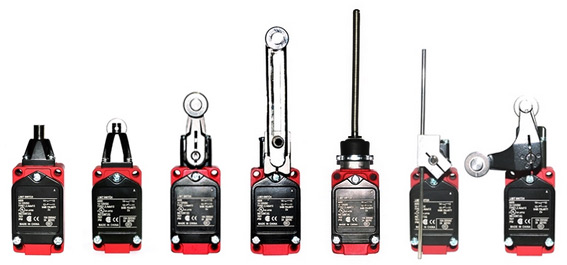How to Select a Limit Switch?
Limit switch is a device that makes use of the collision of the machine moving parts to make the contacts operating to realize the control circuit is turned on or off, so as to achieve a certain control purpose. It cooperates with other devices to form more complex automation equipments in industry. Therefore, selecting more suitable limit switches will make the entire automatic control system becomes more reasonable and efficient.
There are some key points for chooseing limit switch:
- Select the limit switches according to the application scenarios and control object.
When the movement speed of machine is not fast, the limit switches with the general application are usually used. When the path through which the machine travels is not appropriate for the installation of the roller plunger limit switches, the roller lever limit switches should be used.
Besides, when there are very high requirements on the working efficiency, reliability and accuracy, another kind of switch - proximity sensor should be selected. - Select the appropriate actuator form according to the transmission force between the machine and limit switch, as well as the corresponding displacement relationship, that is, select the structural form of the limit switch according to the movement characteristics of the machine.
Shell: According to the load of the limit switch, for light loads and medium loads, the shell material is mostly plastic. For heavy loads and super heavy loads, the shell material is mostly metal. Therefore, it is required to choose the appropriate shell.
Actuator: Different acturatos are selected according to the shape and movement direction of the detection target. The types of actuators include roller plunger, top plunger, roller lever, adjustable roller lever, adjustable rod lever, fork lever, and coil spring.
- Select the limit switches series according to the rated voltage and rated current of the control circuit.
- According to the installation environment to choose the protection mode: open type or protection type.
- According to the environmental factors such as ambient temperature, vibration and shock resistance, and protection class to select a appropriate limit switch. For example, the waterproof limit switch can be used in the industrial occasions required for waterproof, oil-resistant and dustproof.
In addition to above key points, the following details should also be taken to:
- Contact module: According to the different needs, select different number of contacts, slow-moving contacts or quick-moving contacts.
- Operating speed: It means the maximum allowed triggering speed. If this speed is exceeded, the limit switch may have malfunction or be damaged due to excessive force.
- Cable inlet module: There are several cable inlet that comply with different standards. In addition to the direct wire type of common model, ISO, DIN, NPT and other standard cable types are frequently used. The difference is only the different inside diameter of the thread of the limit switch inlet and the thread pitch caused by different braking types.
- Minimum force: The minimum force required for triggering. There are usually two types of minimum force (N) and minimum moment (Nm).
- The working life: The working life can be divided into machinery working life and electric working life.
Of course, if there is anything you feel unclear about limit switch selection, you can consult online or email us. ATO has professional engineers who will patiently solve all the problems related to the limit switch for you.

